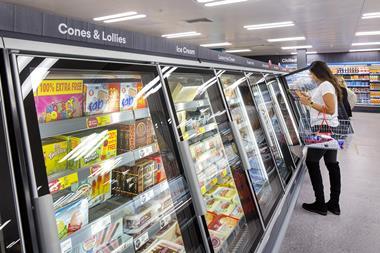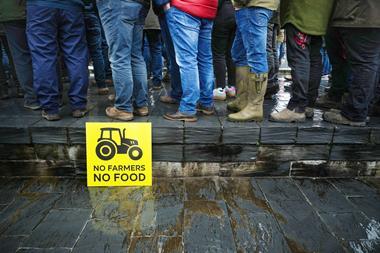But there was a sting in the tail, because the Commission also warned that reducing from five to four competitors locally could be a threat to the intensity of competition at a national level. And its document adds: "It has been put to us that, if Morrisons acquired Safeway, it would have to integrate two very different businesses and its success in achieving this while not sacrificing efficiency might be thought uncertain."
In truth, almost every party involved in the Commission's Safeway inquiry was able to find cause for encouragement somewhere in the statement (see box). The document was intended to summarise the Commission's latest thinking. But, perhaps hamstrung by the need not to pre-judge the outcome of its inquiry, the Commission seemed determined to rule out almost nothing.
So, while apparently giving the nod to a Morrisons bid, the Commission's document simultaneously raises the prospect that none of the four supermarket groups would be allowed to bid for Safeway.
"Safeway cannot be considered a failing firm," says the Commission, which questions whether Safeway's inability to compete is caused by structural reasons or whether a change of management or strategy would remedy the situation. "Although past evidence is inconclusive, we note that there have been examples in recent years of other multiple grocery retailers recovering from comparatively weak positions," it notes.
Safeway's shareholders clearly take a different view with the chain's share price dropping 13p on the day the Remedies Statement was released. But that analysis must have cheered retail entrepreneur Philip Green, who is the only interested party not caught up in this inquiry. He is now said to be waiting for the Commission's final verdict before deciding whether to bid for Safeway.
Despite the document's cautious language, and the resulting mixed signals, one thing is clear: the Commission remains deeply concerned about the long-term impact of any further significant contraction among grocery retailers.
As Tesco's Sir Terry Leahy acknowledges (see box), there are serious issues to be overcome before four national players are allowed to become three. What is particularly noteworthy is the Commission's suggestion that local competition issues cannot be considered in isolation from national issues. It says the one-stop shopping market is essentially local because of the distance shoppers are willing to drive to shop, but decisions affecting the local market, such as ranging, are often taken at a national, head office level.
"This inter-relationship between local and national strategies implies that divestment at the local level would not necessarily solve all competition problems at the national level," its document explains.
At the same time, in a move that heartened campaigners for neighbourhood stores, the Commission revealed it was studying the effect of Safeway's stores below 1,400 sq m (15,000 sq ft) on local retailers.
The Commission also said it would use three methods to measures the degree of national competition the number of fascias nationally, the Herfindahl Hirschmann Index (a calculation of the concentration of stores) and market share data and it noted that national Herfindahl Hirschmann figures were already high. That clearly spells trouble for the big three.
Although the analysis of isochrones (the catchment area of stores based on drive times) to determine where local competition occurs between stores was predicted by the inquiry team chairman Sir Derek Morris at the outset, they have modified their approach by deciding to incorporate population centres into their analysis.
In the event of any retailers getting the go-ahead to bid for Safeway, results of the isochrone analysis would be used to determine which stores would have to be sold in order for a deal to go ahead without damaging competition. And if the Commission prevented anybody from buying the business outright, that analysis would also determine whether they could still buy parcels of stores.
But the Commission also indicated it could control the sales very tightly, insisting stores were sold in small packages rather than large blocks in order to give smaller retailers an opportunity to buy them, and it might consider forcing a successful bidder to sell part of its land bank. Distribution assets could also come into the equation.
These, and all the other complex issues raised in the Remedies Statement, will now be discussed by the Commission and the four retailers. As Sainsbury's Sir Peter Davis says, publication of the document represents half time in the Safeway inquiry. The second half kicks off next week with those private meetings with the Commission. And the final whistle? Well, that should comes anytime after August 12 when the Commission is due to deliver its verdict to the DTI.
{{ANALYSIS }}
In truth, almost every party involved in the Commission's Safeway inquiry was able to find cause for encouragement somewhere in the statement (see box). The document was intended to summarise the Commission's latest thinking. But, perhaps hamstrung by the need not to pre-judge the outcome of its inquiry, the Commission seemed determined to rule out almost nothing.
So, while apparently giving the nod to a Morrisons bid, the Commission's document simultaneously raises the prospect that none of the four supermarket groups would be allowed to bid for Safeway.
"Safeway cannot be considered a failing firm," says the Commission, which questions whether Safeway's inability to compete is caused by structural reasons or whether a change of management or strategy would remedy the situation. "Although past evidence is inconclusive, we note that there have been examples in recent years of other multiple grocery retailers recovering from comparatively weak positions," it notes.
Safeway's shareholders clearly take a different view with the chain's share price dropping 13p on the day the Remedies Statement was released. But that analysis must have cheered retail entrepreneur Philip Green, who is the only interested party not caught up in this inquiry. He is now said to be waiting for the Commission's final verdict before deciding whether to bid for Safeway.
Despite the document's cautious language, and the resulting mixed signals, one thing is clear: the Commission remains deeply concerned about the long-term impact of any further significant contraction among grocery retailers.
As Tesco's Sir Terry Leahy acknowledges (see box), there are serious issues to be overcome before four national players are allowed to become three. What is particularly noteworthy is the Commission's suggestion that local competition issues cannot be considered in isolation from national issues. It says the one-stop shopping market is essentially local because of the distance shoppers are willing to drive to shop, but decisions affecting the local market, such as ranging, are often taken at a national, head office level.
"This inter-relationship between local and national strategies implies that divestment at the local level would not necessarily solve all competition problems at the national level," its document explains.
At the same time, in a move that heartened campaigners for neighbourhood stores, the Commission revealed it was studying the effect of Safeway's stores below 1,400 sq m (15,000 sq ft) on local retailers.
The Commission also said it would use three methods to measures the degree of national competition the number of fascias nationally, the Herfindahl Hirschmann Index (a calculation of the concentration of stores) and market share data and it noted that national Herfindahl Hirschmann figures were already high. That clearly spells trouble for the big three.
Although the analysis of isochrones (the catchment area of stores based on drive times) to determine where local competition occurs between stores was predicted by the inquiry team chairman Sir Derek Morris at the outset, they have modified their approach by deciding to incorporate population centres into their analysis.
In the event of any retailers getting the go-ahead to bid for Safeway, results of the isochrone analysis would be used to determine which stores would have to be sold in order for a deal to go ahead without damaging competition. And if the Commission prevented anybody from buying the business outright, that analysis would also determine whether they could still buy parcels of stores.
But the Commission also indicated it could control the sales very tightly, insisting stores were sold in small packages rather than large blocks in order to give smaller retailers an opportunity to buy them, and it might consider forcing a successful bidder to sell part of its land bank. Distribution assets could also come into the equation.
These, and all the other complex issues raised in the Remedies Statement, will now be discussed by the Commission and the four retailers. As Sainsbury's Sir Peter Davis says, publication of the document represents half time in the Safeway inquiry. The second half kicks off next week with those private meetings with the Commission. And the final whistle? Well, that should comes anytime after August 12 when the Commission is due to deliver its verdict to the DTI.
{{ANALYSIS }}



















No comments yet